Europe's Diesel Portfolio
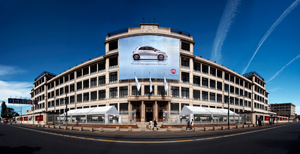
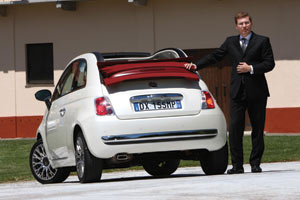
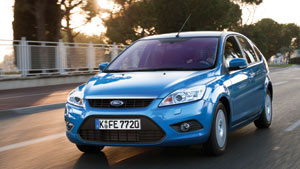
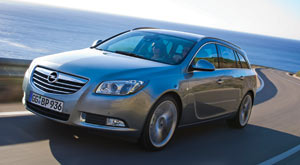
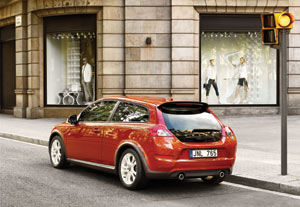

January 19, 2010
BY Nicholas Zeman
Fiat's headquarters in Lingotto outside of Turin, Italy, is a flagship of world diesel production. Now the largest vehicle factory in Europe, original construction began in 1916, reaching completion in1922. From its halls and assembly lines have come many compression ignited innovations.
The Multijet engine, which began production in 2009, is an example of Fiat's continued work with the diesel motor. "The new system-born of the evolution of the common rail principle-is the basis of the new second-generation Fiat engines: the small 1.3-liter, 16-valve Multijet, the sporty 1.9L Multijet 120- or 150-horsepower engines, and the powerful 1.4L Multijet 90-horsepower engine," Fiat literature says.
Fiat's new partner, Chrysler, was the first major original equipment manufacturer (OEM) to warranty B20 in its heavy-duty Dodge Ram trucks, but similar moves from Fiat are not forthcoming even though the diesel engine is part of the company's often high-profile green publicity campaign.
Because Europe is a large producer of biodiesel and the most prolific manufacturer of diesel vehicles, it would seem reasonable to assume that there might be some exciting synergies to develop a solid market for the renewable fuel. Not so, says the European Biodiesel Board. "Peugeot clearly stated that their vehicles could use 20 percent to 30 percent blends, but technically they're still blocking increased blending requirements," says Raffaello Garofalo, general secretary for the EBB.
In general, the efforts of auto manufacturers to promote the use of biodiesel in Europe have been lackluster. "We've made great strides in increasing quality and normalization," Garofalo says. "Many of the [automakers] attempted to block efforts to increase the blend requirement in the EU from 5 percent to 7 percent."
Higher blends need a special clearance from the OEM, but there are many cars on the road capable of running on B100-especially heavy trucks, says Jakob Seiler of the German Vehicle Manufacturers Association (VDA). "Due to latest diesel- technologies, B100 clearances will not be possible any more for future cars," Seiler says. "Some manufacturers in Europe are testing B30, but only within closed fleets."
Some companies have publicly stated that they were making moves to accommodate use of higher biodiesel percentages. "Renault's commitment to biofuels, made by the company as part of Renault Commitment 2009, [projected that] all diesel engines sold in Europe by 2009 will be able to run on fuel blends containing 30 percent biofuel," the company said in December 2006. "Renault sees biofuels as one of the most efficient and economic ways of controlling CO2 emissions in the medium term, since it's easy to fit this technology on volume production models."
That never happened. "That's been over three years, and there's been nothing from Renault," Garofalo says. "What these companies claim, and the image they want to portray, is often very different than what they are doing-and they should be criticized."
New Offerings
The 2010 Ford Focus ECOnetic gets more than 74 miles per gallon. "Power comes from Ford's 109 PS 1.6-liter Duratorq TDCi engine with standard coated diesel particulate filter," states Ford Motor Co. Also, this model features an "auto-start-stop" system that automatically shuts down the engine when the vehicle is idling to save fuel.
In addition to its diesel motor marketing efforts in Europe, Ford recently approved B20 for use in its Super Duty trucks in the U.S., but have not followed suit in Europe. Jennifer Moore of Ford tells Biodiesel Magazine that availability, feedstocks and government policies influenced Ford's geographical biofuels strategy, which was stronger in other parts of the world than in Europe. "They've done nothing like [approving B20] here," says Garofalo from the EBB's headquarters in Brussels. "It's very curious why they do this in other parts of the world and not here."
Conversely, smaller Ford models with diesel engines are not offered in the U.S., causing consumer complaints. There have been more diesel models coming to the U.S. from Europe in recent years, but those still make up a relatively small percentage of the huge selection offered in the EU.
Opel Insignia, Europe's best selling mid-sized sedan built by GM Europe, is another example of a diesel model that is not offered stateside. This often has to do with laws, emissions regulations and other requirements that differ from country to country, even state to state. In Europe, "the brand has nearly doubled its share of the European high-volume mid-sized segment" in the first 10 months of 2009, states GM Europe, adding that the diesel models in the line burn just 5.2 liters (1.37 gallons) of fuel per 100 kilometers (around 62 miles).
It has been an exciting year for new diesels in Europe. In fourth quarter 2009, Peugeot launched its 1.6L HDi FAP diesel engine. "Between this new 1.6L HDi and its predecessor more than 50 percent of the parts have been entirely redesigned," the company reports. Earlier in the year, the company had introduced 2.0L and 3.0L engines out of anticipation of new emissions requirements and respect for the environment-but virtually nothing has been said about biodiesel.
Volvo's diesel offerings for 2010 include the new C30, which use just 3.8 liters of diesel per 100 km and emits less than 100 grams of carbon dioxide per km. Infrastructure could be a problem if the fuel requires separate systems. For Volvo cars and biodiesel, so far the only approval it has given for biodiesel use is for 7 percent low blending.
"Biodiesel is not yet a part of our CO2 reductions strategy simply because our knowledge is limited and there are not yet any commercially available high blends on the market," says Anders Karrberg, executive director of governmental affairs for Volvo. "We have tested 100 percent renewable synthetic diesel with good results, both for regulated and CO2 emissions. We are about to test a new blend of 20 percent renewable and 80 percent fossil diesel, which is about to be introduced to the Swedish market."
HVO, Renewable Diesel
"Biodiesel is standard in Germany, and [in the EU] we have a general blending of biodiesel of up to 7 percent," Seiler tells Biodiesel Magazine about VDA's official position on biodiesel. "Every [diesel engine] in Europe is capable of using so-called B7."
In terms of production capacity, Germany is still a leading global biodiesel producer, and is the birthplace of the diesel engine, so it would seem that methyl ester makers and auto magnates would have some interesting partnerships there. But the industry is keeping its options open when it comes to committing to future fuel platforms. "The German automotive industry is promoting interesting alternatives to biodiesel," Seiler says. "One alternative that's already available in large amount is hydrogenated vegetable oil (HVO)," or renewable diesel.
It seems that auto manufacturers are watching the developments in the renewable fuels sector and hedging their bets as to what technologies and fuel platforms they choose to invest in. "HVO, in terms of CO2 reduction, is as efficient as biodiesel, but can be blended in higher rates than biodiesel," Seiler says. "A 20 percent blending of HVO will be possible without the need to change the general fuel standards."
HVO and synthetic diesel, which were mentioned by Volvo and VDA in their communications with Biodiesel Magazine, are associated with fuel production technologies other than transesterification. Companies such as Neste Oil of Finland, with its NexBTL renewable diesel brand, supply this kind of fuel. Surprisingly, Seiler says the best alternative fuel is not biodiesel, but biomass-to-liquid (BTL). "This fuel has outstanding quality and can be blended in any rate, and there is a lot of research, development and industrial projects to produce BTL in future times."
Nicholas Zeman is an associate editor for Biodiesel Magazine. Reach him at (701) 738-4972 or nzeman@bbiinternational.com.
The Multijet engine, which began production in 2009, is an example of Fiat's continued work with the diesel motor. "The new system-born of the evolution of the common rail principle-is the basis of the new second-generation Fiat engines: the small 1.3-liter, 16-valve Multijet, the sporty 1.9L Multijet 120- or 150-horsepower engines, and the powerful 1.4L Multijet 90-horsepower engine," Fiat literature says.
Fiat's new partner, Chrysler, was the first major original equipment manufacturer (OEM) to warranty B20 in its heavy-duty Dodge Ram trucks, but similar moves from Fiat are not forthcoming even though the diesel engine is part of the company's often high-profile green publicity campaign.
Because Europe is a large producer of biodiesel and the most prolific manufacturer of diesel vehicles, it would seem reasonable to assume that there might be some exciting synergies to develop a solid market for the renewable fuel. Not so, says the European Biodiesel Board. "Peugeot clearly stated that their vehicles could use 20 percent to 30 percent blends, but technically they're still blocking increased blending requirements," says Raffaello Garofalo, general secretary for the EBB.
In general, the efforts of auto manufacturers to promote the use of biodiesel in Europe have been lackluster. "We've made great strides in increasing quality and normalization," Garofalo says. "Many of the [automakers] attempted to block efforts to increase the blend requirement in the EU from 5 percent to 7 percent."
Higher blends need a special clearance from the OEM, but there are many cars on the road capable of running on B100-especially heavy trucks, says Jakob Seiler of the German Vehicle Manufacturers Association (VDA). "Due to latest diesel- technologies, B100 clearances will not be possible any more for future cars," Seiler says. "Some manufacturers in Europe are testing B30, but only within closed fleets."
Some companies have publicly stated that they were making moves to accommodate use of higher biodiesel percentages. "Renault's commitment to biofuels, made by the company as part of Renault Commitment 2009, [projected that] all diesel engines sold in Europe by 2009 will be able to run on fuel blends containing 30 percent biofuel," the company said in December 2006. "Renault sees biofuels as one of the most efficient and economic ways of controlling CO2 emissions in the medium term, since it's easy to fit this technology on volume production models."
That never happened. "That's been over three years, and there's been nothing from Renault," Garofalo says. "What these companies claim, and the image they want to portray, is often very different than what they are doing-and they should be criticized."
New Offerings
The 2010 Ford Focus ECOnetic gets more than 74 miles per gallon. "Power comes from Ford's 109 PS 1.6-liter Duratorq TDCi engine with standard coated diesel particulate filter," states Ford Motor Co. Also, this model features an "auto-start-stop" system that automatically shuts down the engine when the vehicle is idling to save fuel.
In addition to its diesel motor marketing efforts in Europe, Ford recently approved B20 for use in its Super Duty trucks in the U.S., but have not followed suit in Europe. Jennifer Moore of Ford tells Biodiesel Magazine that availability, feedstocks and government policies influenced Ford's geographical biofuels strategy, which was stronger in other parts of the world than in Europe. "They've done nothing like [approving B20] here," says Garofalo from the EBB's headquarters in Brussels. "It's very curious why they do this in other parts of the world and not here."
Conversely, smaller Ford models with diesel engines are not offered in the U.S., causing consumer complaints. There have been more diesel models coming to the U.S. from Europe in recent years, but those still make up a relatively small percentage of the huge selection offered in the EU.
Opel Insignia, Europe's best selling mid-sized sedan built by GM Europe, is another example of a diesel model that is not offered stateside. This often has to do with laws, emissions regulations and other requirements that differ from country to country, even state to state. In Europe, "the brand has nearly doubled its share of the European high-volume mid-sized segment" in the first 10 months of 2009, states GM Europe, adding that the diesel models in the line burn just 5.2 liters (1.37 gallons) of fuel per 100 kilometers (around 62 miles).
It has been an exciting year for new diesels in Europe. In fourth quarter 2009, Peugeot launched its 1.6L HDi FAP diesel engine. "Between this new 1.6L HDi and its predecessor more than 50 percent of the parts have been entirely redesigned," the company reports. Earlier in the year, the company had introduced 2.0L and 3.0L engines out of anticipation of new emissions requirements and respect for the environment-but virtually nothing has been said about biodiesel.
Volvo's diesel offerings for 2010 include the new C30, which use just 3.8 liters of diesel per 100 km and emits less than 100 grams of carbon dioxide per km. Infrastructure could be a problem if the fuel requires separate systems. For Volvo cars and biodiesel, so far the only approval it has given for biodiesel use is for 7 percent low blending.
"Biodiesel is not yet a part of our CO2 reductions strategy simply because our knowledge is limited and there are not yet any commercially available high blends on the market," says Anders Karrberg, executive director of governmental affairs for Volvo. "We have tested 100 percent renewable synthetic diesel with good results, both for regulated and CO2 emissions. We are about to test a new blend of 20 percent renewable and 80 percent fossil diesel, which is about to be introduced to the Swedish market."
HVO, Renewable Diesel
"Biodiesel is standard in Germany, and [in the EU] we have a general blending of biodiesel of up to 7 percent," Seiler tells Biodiesel Magazine about VDA's official position on biodiesel. "Every [diesel engine] in Europe is capable of using so-called B7."
In terms of production capacity, Germany is still a leading global biodiesel producer, and is the birthplace of the diesel engine, so it would seem that methyl ester makers and auto magnates would have some interesting partnerships there. But the industry is keeping its options open when it comes to committing to future fuel platforms. "The German automotive industry is promoting interesting alternatives to biodiesel," Seiler says. "One alternative that's already available in large amount is hydrogenated vegetable oil (HVO)," or renewable diesel.
It seems that auto manufacturers are watching the developments in the renewable fuels sector and hedging their bets as to what technologies and fuel platforms they choose to invest in. "HVO, in terms of CO2 reduction, is as efficient as biodiesel, but can be blended in higher rates than biodiesel," Seiler says. "A 20 percent blending of HVO will be possible without the need to change the general fuel standards."
HVO and synthetic diesel, which were mentioned by Volvo and VDA in their communications with Biodiesel Magazine, are associated with fuel production technologies other than transesterification. Companies such as Neste Oil of Finland, with its NexBTL renewable diesel brand, supply this kind of fuel. Surprisingly, Seiler says the best alternative fuel is not biodiesel, but biomass-to-liquid (BTL). "This fuel has outstanding quality and can be blended in any rate, and there is a lot of research, development and industrial projects to produce BTL in future times."
Nicholas Zeman is an associate editor for Biodiesel Magazine. Reach him at (701) 738-4972 or nzeman@bbiinternational.com.
Advertisement
Advertisement
Upcoming Events





